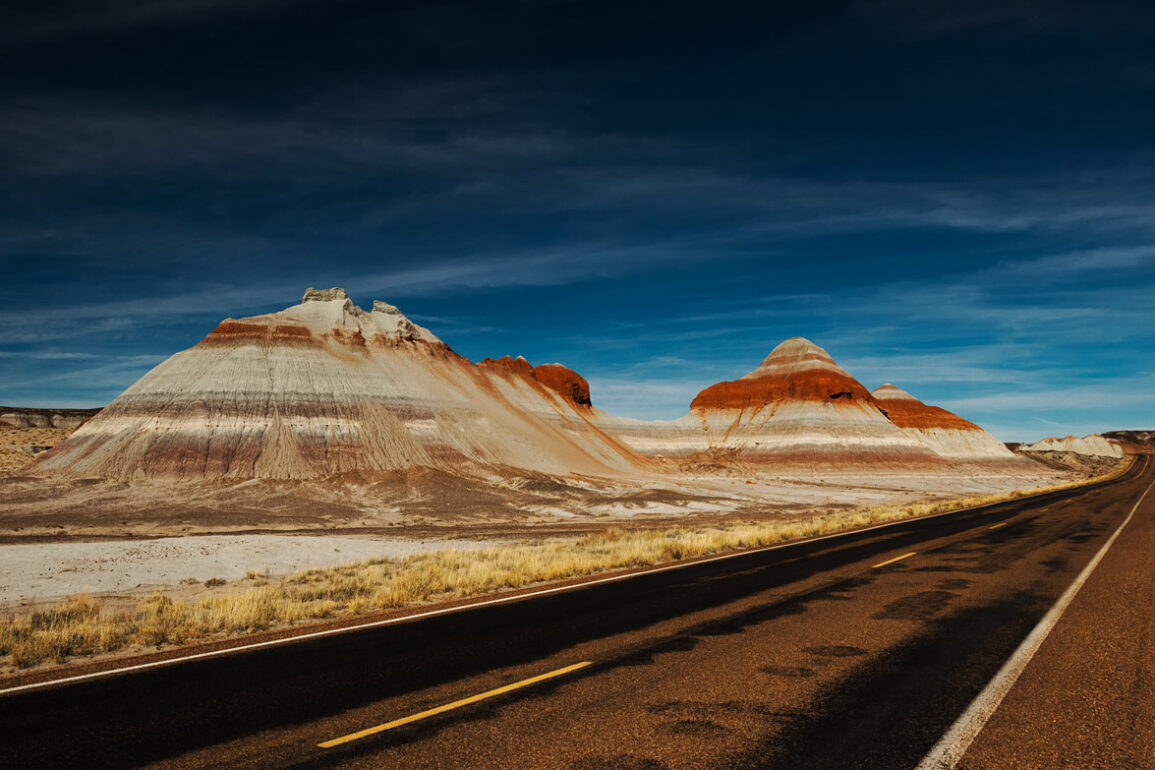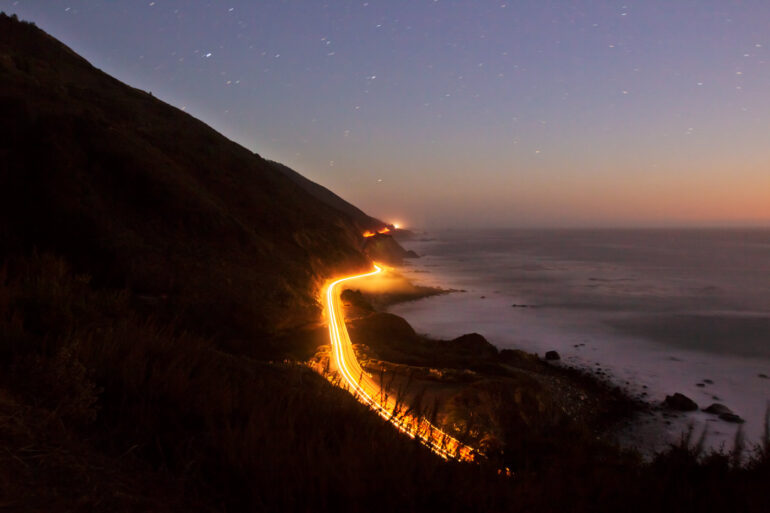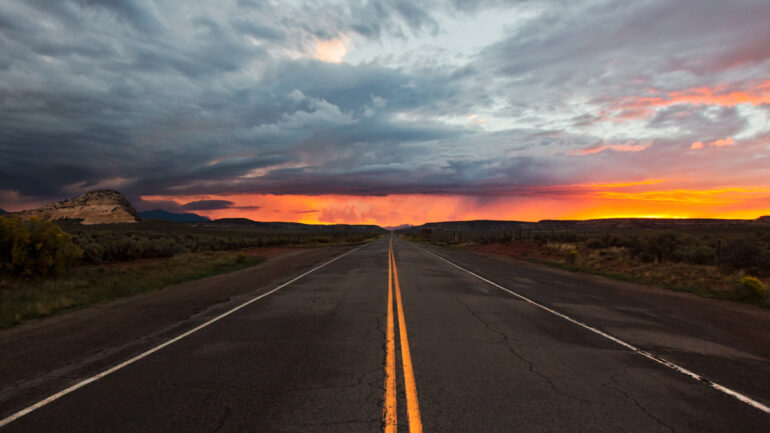We may earn a commission when you purchase through affiliate links. Learn more.
Tip 1: Plan Your Shots
Sometimes the most amazing photo spots lie just off the road, but if you haven’t done your research and don’t have a rough plan, you’ll be missing lots of photography opportunities that often aren’t marked on maps or signs. Before you leave on your road trip, make a list of all the places you want to visit and then try to find interesting destinations nearby. Books like Road Trip USA: Cross-Country Adventures on America’s Two-Lane Highways and websites like Roadtrippers are great resources for planning road trips in the US.
Once you have a basic itinerary, you can use photo sharing sites like 500px, Instagram and Flickr to search for the locations you’ll be passing, to see what kind of photos others are taking nearby. You might find out about scenic overlooks, secluded waterfalls, and great trails that you would otherwise never know about.
Tip 2: Stay Organized
It’s tough to stay organized as a photographer on a road trip, especially a long one. You’ll be juggling memory cards, batteries, lenses, filters, a tripod, and who knows what other odds and ends. It’s really easy to bring too much stuff, so before you head out on your road trip, ask yourself what you really need to bring.
Do you need to bring your Canon 50mm f/1.8 AND your Canon 50mm f/1.4 lens? Probably not.
Make some tough decisions by making an honest list of the kind of photos you plan on taking. While it might seem like bringing more gear will help you to take more photos, when you’re on the road having too much equipment can actually have the opposite effect. Keeping your kit simple and light makes you more likely to grab your camera and take a photo when you see something interesting! Sometimes the best photos on a road trip end up being of things you almost didn’t take a picture of — having easily accessible gear makes it much easier to quickly grab your camera and take a picture that you might not have bothered with otherwise.
DSLR and mirrorless cameras are definitely the most versatile option for road trip photography, but for the ultimate in portability, don’t overlook the possibility of using an advanced compact camera like the Sony RX100 VII which has a one inch sensor, RAW capture, and features an impressive 24-200 millimeter equivalent F2.8-F4.5 lens making it very versatile for both wide landscape scenes and zoomed wildlife shots.
- 20. 1MP 1. 0 Type stacked CMOS sensor, Zeiss Vario Sonnar T 24 200 millimeter F2. 8 F4. 5 large aperture...
- 0. 02 sec. High AF speed, 357 point focal plane Phase detection AF and 425 point contrast detection AF
- Up to 20 fps blackout free shooting, using up to 60 times/sec. AF/AE calculations. Diopter Adjustment:...
- AI based real time tracking for stills and movies, and touch tracking. Real time eye AF for human (stills...
Tip 3: Get an Early Start
If you’re taking a road trip during a busy travel season, the most photogenic locations like national parks get crowded quickly. Wake up early and you might be able to capture the unspoiled beauty of nature or even a city street without worrying about people walking into your shots! If you’re up early enough, you’ll get a chance to shoot during the morning golden hour, a special time of day shortly after sunrise when the tones of light are very warm, and bathe everything in a beautiful golden light.
Tip 4: Think Before you Shoot
It’s easy to start taking pictures on autopilot. Maybe you’ve figured out a setting or method that tends to work really well most of the time, but getting stuck in a routine can be bad for creativity. To keep your shots varied and interesting, pause before you take every photo and make a conscious effort to consider a few things:
- How’s the Composition? Capture more than a snapshot by making sure your composition is strong. Think about your subject placement and your foreground & background elements.
- Where’s the Light Coming From? Light is everything in a photo, so be aware of where it’s coming from to avoid underexposing or overexposing your photos.
- How Could the Shot be Improved? Look around you and see if there’s anything you can do to improve your photo. Would walking to a different position give you a better angle? Would your photo benefit from having a person in it to give the scene a sense of scale?
- Is your Horizon Straight? Nothing is more distracting from an otherwise great photo than a crooked horizon. You can fix it later, but you’ll end up cropping out part of your photo to straighten the horizon — it’s much easier and better to get it right when you take the shot.
Tip 5: Include the Road
Nothing captures the magic of the open road better than, well…the open road. Including a stretch of lonely highway in your photo can really convey the essence of the road trip experience. Only pull off the road where it’s safe to do so, and always make sure there’s no traffic anywhere around!
Tip 6: Use a Polarizing Filter
A deep blue sky can really help the colors of the landscape pop in your road trip photos, and one of the most effective ways to get this look is using a circular polarizer filter. Polarizing filters can help increase color saturation and contrast, reduce reflections on glass and water, and block 1 to 2 stops of light, allowing you to use a slightly longer exposure time or a wider aperture on a bright day.
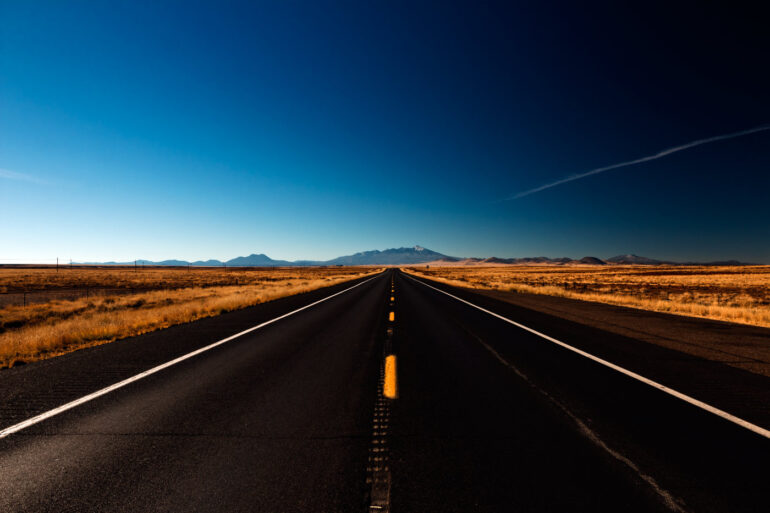
Tip 7: Back your Photos Up
Backing up your photos is one of the most important things you can do to ensure you never lose them, but it’s something that most people don’t bother with while they’re actually traveling. For a comprehensive overview of digital backup options for photographers, be sure to visit this guide.
For road trips of more than just a day or two, you should definitely back up your photos along the way. Memory cards and the cameras they’re usually in get lost, stolen, and broken all the time, but if you’ve got a backup copy of your photos, your memories are much safer. Make backing up your photos a routine you do every evening after you stop driving for the day.
- Powerful NVMe solid state performance featuring up to 2000MB/s read/write speeds.(1) (Based on internal...
- A forged aluminum chassis acts as a heatsink to deliver higher sustained speeds in a portable drive...
- Up to 3-meter drop protection and IP65 water and dust resistance(4), and a handy carabiner loop....
- Help keep private content private with the included password protection featuring 256‐bit AES hardware...
An external hard drive like the water and dust resistant SanDisk 4TB Extreme PRO Portable SSD is a great, compact way to store you photo backups while you’re on a road trip.
Tip 8: Photograph Everything
Wide open landscapes and snow-capped mountain peaks are great subjects to photograph on your road trip, but some of the best memories are the little moments like setting up camp or pulling into a sleepy country town after a long day on the road. These are often the moments when you feel least like pulling out the camera and shooting, but it’s at these times that you really should!
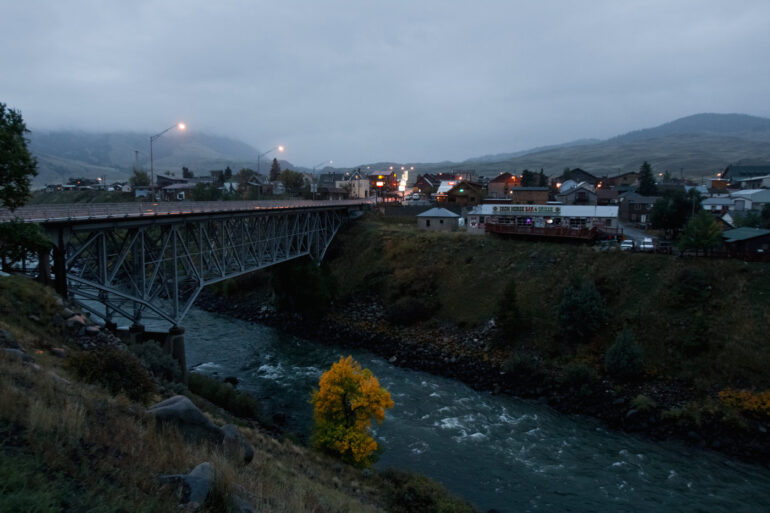
Tip 9: Bring Extra Memory Cards & Batteries
When it comes to the heavy gear, sometimes it’s better to bring less on your road trip…but for the light weight, small accessories like memory cards and batteries, too much is always enough!
Camera batteries tend to die at the most inopportune times, so having a few spare batteries charged and ready to go makes it easy to keep shooting without having to wait for your one battery to charge for an hour. To charge my spare camera batteries while driving, I use this super affordable 6 port USB adapter that plugs into the car’s cigarette lighter DC outlet. As soon as I get back in the car after taking photos while out on a trail or at an overlook, I pop any dead or low batteries on my USB charger while I’m driving and it ensures that I’ve never got any dead batteries sitting around.
- Ultimate Charging Solution: Maximize the charging capacity in your car with this versatile USB car...
- Versatile USB Ports: Features 4 USB ports including 1 SCP/QC3.0 port, 2 3.1A ports, 2 PD ports, and 1...
- Intelligent Chipset: The built-in intelligent chipset automatically detects the optimal charging voltage...
- Sleek and Compact Design: The charger's sleek and compact design makes it highly portable, fitting...
Memory cards are another thing that you can never have too many of. I’ve had good experiences with Lexar, SanDisk, Transcend, and Sony memory cards and usually buy 32GB and 64GB cards, since shooting RAW or 4K video consumes memory quickly.
For more tips on what to bring, check out our guide to the best gear and accessories for travel.
Tip 10: Don’t Forget About Your Photos
It’s really easy to neglect all the great photos you’ve taken on your road trip once you get back to your everyday life. Make your travel photos a priority though, and start going through them as soon as you get home. You spent time carefully composing these photos, so give them the attention the deserve: edit them, share them, print them!
Share some on your Facebook, Twitter, and Instagram so your friends can live vicariously through you. Hang some on your wall to remind you of your adventure. Enter some in a photo contest. Get greeting cards, magnets, and postcards made with your favorite road trip shots. Print some in a photobook to flip through every time you start to get that itch to head out on the road again!

